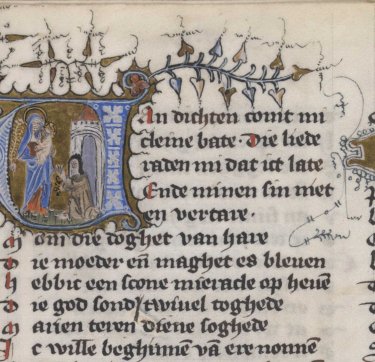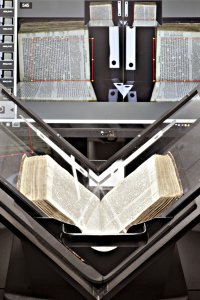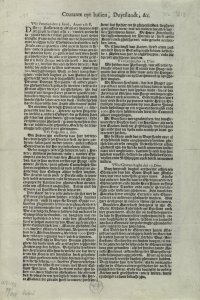Written heritage
The KB collects everything that is written in and about the Netherlands: from medieval manuscripts to websites. We want to preserve this heritage and make it easily accessible to everyone. How do we do that? And how do we keep our collection intact?
How do we preserve written heritage?
The KB stores everything written in and about the Netherlands. We keep physical copies of - for example - books, newspapers and magazines in our warehouse. Digital copies are stored in our digital warehouse.
Making heritage digitally available
We also want as many people as possible to see that heritage. A large part is therefore already available digitally. It can be viewed online:
- In Delpher you will find millions of digitized Dutch newspapers, books and magazines. You can search them all word for word.
- The Digital Library of Dutch Literature (DBNL) is a digital collection of texts from and about Dutch literature, linguistics and cultural history, from the earliest times to the present.
- Het Geheugen/The Memory is an online image bank with collections from museums, archives and libraries.
- Via the Webloket/Web Block digital publications can be deposited at the KB that (if open access) can be viewed via the catalog of the KB.
Web archiving
The KB also stores websites in the web collection – sustainable and forever. We prefer to keep everything that can be seen on a screen: text and images, but also the layout. The team uses a special computer program for this, which the KB developed together with the National Library of New Zealand. The KB now stores 21,750 websites. Someday the team wants to save all websites in the Netherlands. That is not allowed yet. That is why the team is already practicing with all Frisian websites. The KB also wants to store online news and social media in the future. That is interesting for later, as a glimpse into our time.
Restoration
We restore damaged books to ensure that our heritage can also be viewed in the future. We prefer to do this as little as possible, to keep the book authentic and to keep the history of the book visible. However, sometimes restoration is necessary to keep the book accessible and usable. When necessary we - for example - renew the spine or secure loose pages.



